
| Common Gum Snout Moth (formerly known as Opsirhina fervens) LASIOCAMPINAE, LASIOCAMPIDAE, BOMBYCOIDEA | (donherbisonevans@yahoo.com) and Stella Crossley & John Stumm |

early instars
(Photo: courtesy of
Dianne Clarke,
Jerrabomberra, New South Wales)

| Common Gum Snout Moth (formerly known as Opsirhina fervens) LASIOCAMPINAE, LASIOCAMPIDAE, BOMBYCOIDEA | (donherbisonevans@yahoo.com) and Stella Crossley & John Stumm |

early instars
(Photo: courtesy of
Dianne Clarke,
Jerrabomberra, New South Wales)
Early instars of this Caterpillar are dark grey with a row orange dashes along each side.

Late instars are large and fleshy, with soft downy hairs. It is sometimes smooth, sometimes rough, sometimes brown, and sometimes grey. The variable nature of the caterpillars suggests that the name Entometa fervens is being applied to a complex of several species. More investigation is needed to clarify this.
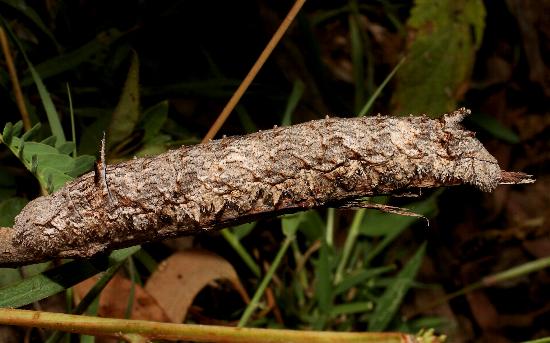
The caterpillar has a prominent projection on the back near the posterior end, and a pair of fleshy filaments behind the head. It is solitary, and feeds at night on a variety of plants in MYRTACEAE such as:
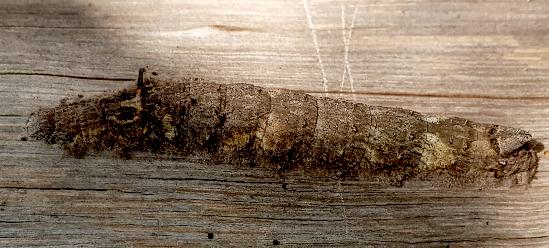
By day, it rests well camouflaged, flattened against the stem of its foodplant, with the hairs along the sides disguising its legs. Also: the rounded knob on the tail mimics a broken-off gum tree twig.
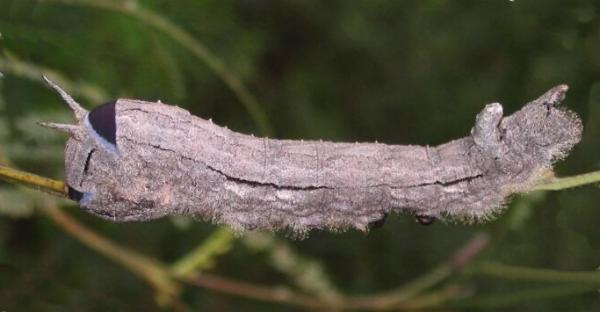
If disturbed, the caterpillar rears up its tail and its thorax, tucks its head under the body, displays two pale-blue edged black bands that are normally hidden between segments, and stiffens the two horns behind the head.
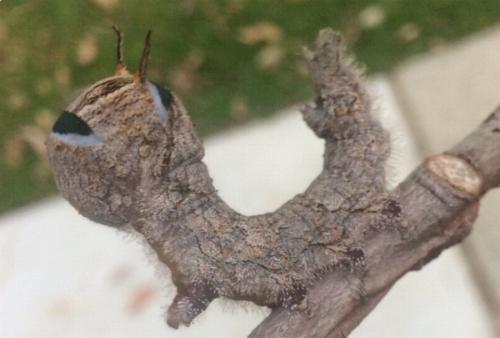
The caterpillar grows to a length of about 7 cms.
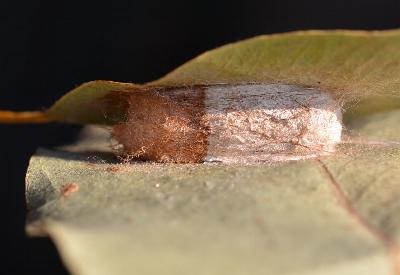
It pupates in a white papery cocoon between two leaves on the foodplant.
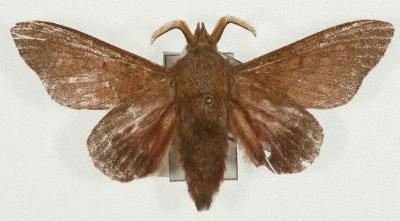
The moths are rusty coloured with variable patterns of dotted and zigzag lines, and with stout hairy bodies. The wings of the females vary in colour from orange through brown to cream, The hindwings of the male vary from orange to through brown to black, The moths often have a dark patch under the hindwing, and black antennae which can be used to distinguish them from Entometa guttularis. The adult males have a wingspan up to 5 cms. The females have a wingspan up to 8 cms.

The species is found mainly in the southern half of Australia, but has been found in:
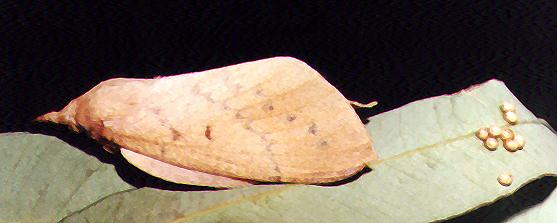
The female lays her eggs in untidy clusters on leaves of a food plant. The eggs are mottled brown and ovoid, with a length of about 2 mm. Many are laid lying on their sides. An adult female captured in Brisbane at night in May 2003 had laid 20 -25 eggs by morning. The eggs hatched 11 days later and the caterpillars were reared on the young shoots of a Red River gum.
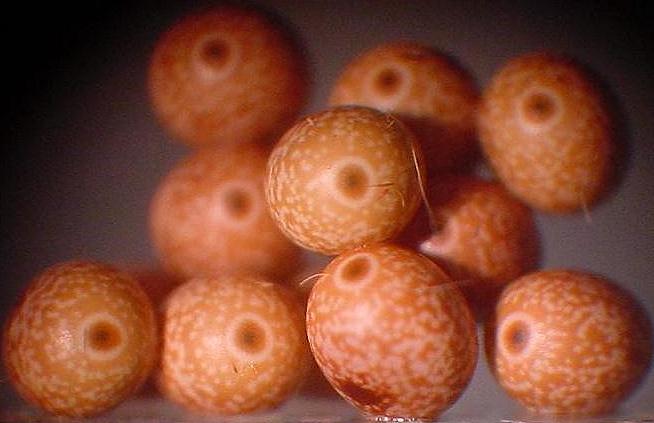
Most pupated between after 7 to 8 weeks. The last larva delayed pupation until 11 weeks after hatching. After a pupal stage of 6 - 7 weeks, one female and two male adults emerged. The specimen that delayed its pupation by an extra 3 weeks actually emerged as a female adult moth 3 ½ weeks later, so emerging at nearly the same time as those that had pupated early.
We have observed that females bred in captivity lay eggs the next day after they emerge from the pupa, and that these eggs are usually unfertilised. These moths are similar to domestic poultry in this regard.

Further reading :
David Carter,
Butterflies and Moths,
Collins Eyewitness Handbooks, Sydney 1992, p. 208.
Ian F.B. Common,
Moths of Australia,
Melbourne University Press, 1990, pls. 12.21, 12.22, p. 390.
Pat and Mike Coupar,
Flying Colours,
New South Wales University Press, Sydney 1992.
Peter B. McQuillan, Jan A. Forrest, David Keane, & Roger Grund,
Caterpillars, moths, and their plants of Southern Australia,
Butterfly Conservation South Australia Inc., Adelaide (2019), pp. 92-93.
Peter Marriott,
Moths of Victoria - Part 1,
Silk Moths and Allies - BOMBYCOIDEA,
Entomological Society of Victoria, 2008, pp. 10-11.
Buck Richardson,
Tropical Queensland Wildlife from Dusk to Dawn Science and Art,
LeapFrogOz, Kuranda, 2015, p. 101.
Francis Walker,
Catalogue of Lepidoptera Heterocera,
List of the Specimens of Lepidopterous Insects in the Collection of the British Museum,
Part 6 (1855), p. 1419.
Paul Zborowski and Ted Edwards,
A Guide to Australian Moths,
CSIRO Publishing, 2007, p. 153.
 caterpillar |  butterflies |  Lepidoptera |  moths |  caterpillar |
(updated 27 September 2012, 30 December 2025)